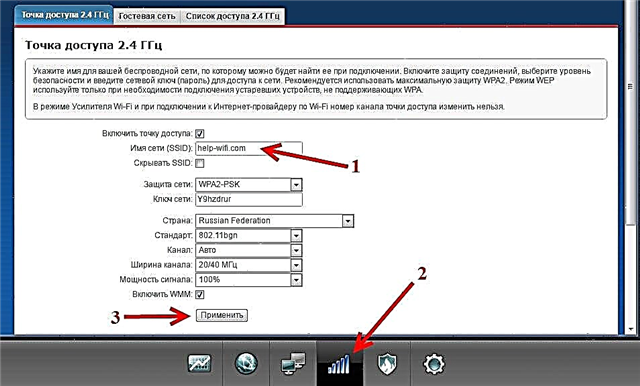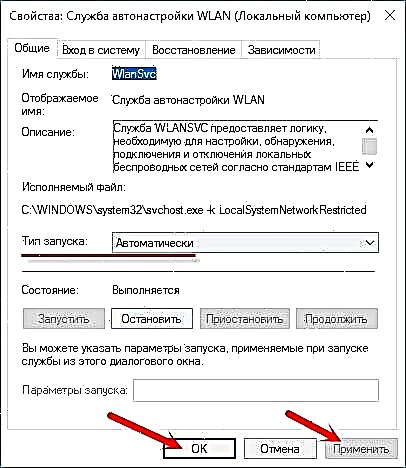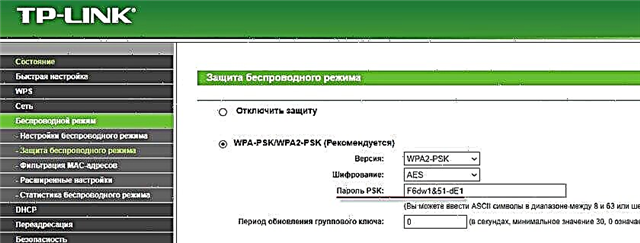To secure your Wi-Fi network and set a password, be sure to select the wireless security type and encryption method. And at this stage, many have a question: which one to choose? WEP, WPA, or WPA2? Personal or Enterprise? AES, or TKIP? What security settings will best protect your Wi-Fi network? I will try to answer all these questions within the framework of this article. Let's consider all possible methods of authentication and encryption. Let's find out which Wi-Fi network security parameters are best set in the router settings.
Note that the type of security or authentication, network authentication, security, authentication method are all the same.
Authentication type and encryption are the basic security settings for a wireless Wi-Fi network. I think first you need to figure out what they are, what versions there are, their capabilities, etc. After that, we’ll find out what type of protection and encryption to choose. I will show you using several popular routers as an example.
I highly recommend setting up a password and securing your wireless network. Set the maximum level of protection. If you leave the network open, unprotected, anyone can connect to it. This is unsafe in the first place. As well as unnecessary load on your router, drop in connection speed and all kinds of problems with connecting different devices.
Wi-Fi network security: WEP, WPA, WPA2
There are three protection options. Not counting "Open", of course.
- WEP (Wired Equivalent Privacy) is an outdated and insecure authentication method. This is the first and not very successful method of protection. Attackers can easily access wireless networks that are protected with WEP. You do not need to set this mode in the settings of your router, although it is present there (not always).
- WPA (Wi-Fi Protected Access) is a reliable and modern type of security. Maximum compatibility with all devices and operating systems.
- WPA2 - new, improved and more reliable version of WPA. There is support for AES CCMP encryption. At the moment, this is the best way to secure your Wi-Fi network. This is what I recommend using.
WPA / WPA2 can be of two types:
- WPA / WPA2 - Personal (PSK) Is the usual way to authenticate. When you only need to set a password (key) and then use it to connect to a Wi-Fi network. One password is used for all devices. The password itself is stored on the devices. Where, if necessary, you can see it, or change it. This is the recommended option.
- WPA / WPA2 - Enterprise - a more complex method, which is mainly used to protect wireless networks in offices and various institutions. Provides a higher level of protection. It is used only when a RADIUS server is installed for device authorization (which issues passwords).
I think we've figured out the authentication method. Best to use WPA2 - Personal (PSK). For better compatibility, so that there are no problems with connecting older devices, you can set WPA / WPA2 mixed mode. Many routers use this method by default. Or marked as "Recommended".
Wireless encryption
There are two waysTKIP and AES.

We recommend using AES. If you have old devices on the network that do not support AES encryption (but only TKIP) and there will be problems with their connection to the wireless network, then set "Auto". TKIP encryption type is not supported in 802.11n mode.
In any case, if you set strictly WPA2 - Personal (recommended), then only AES encryption will be available.
What kind of protection should I put on a Wi-Fi router?
UseWPA2 - Personal with AES encryption... This is by far the best and safest way. This is how the wireless security settings look on ASUS routers:

Read more in the article: how to set a password on an Asus Wi-Fi router.
And this is how these security settings look on TP-Link routers (with old firmware).

More detailed instructions for TP-Link can be found here.
Instructions for other routers:
- Setting up Wi-Fi network security and password on D-Link
- Wireless security on Tenda routers
- Instructions for Totolink: setting the authentication method and password
If you do not know where to find all these settings on your router, then write in the comments, I will try to suggest. Just don't forget to indicate the model.
Since older devices (Wi-Fi adapters, phones, tablets, etc.) may not support WPA2 - Personal (AES), in case of connection problems, set the mixed mode (Auto).
I often notice that after changing the password or other protection parameters, the devices do not want to connect to the network. The computers may have the error "The network settings saved on this computer do not match the requirements of this network." Try to delete (forget) the network on the device and reconnect. How to do it on Windows 7, I wrote here. And in Windows 10, you need to forget the network.
Password (key) WPA PSK
Whichever security type and encryption method you choose, you need to set a password. It is also WPA Key, Wireless Password, Wi-Fi Network Security Key, etc.
Password length from 8 to 32 characters. Latin letters and numbers can be used. Also special characters: - @ $ #! etc. No spaces! The password is case sensitive! This means that "z" and "Z" are different characters.
I do not recommend using simple passwords. It is better to create a strong password that no one can guess for sure, even if they try hard.

It is unlikely that you will be able to remember such a complex password. It would be nice to write it down somewhere. It's not uncommon for a Wi-Fi password to be forgotten. What to do in such situations, I wrote in the article: how to find out your Wi-Fi password.
Also, don't forget to set a good password to protect your router's web interface. How to do this, I wrote here: how to change the password on the router from admin to another.
If you need even more protection, you can use MAC address binding. True, I do not see the need for this. WPA2 - Personal paired with AES and a strong password is enough.
How do you protect your Wi-Fi network? Write in the comments. Well, ask questions 🙂











